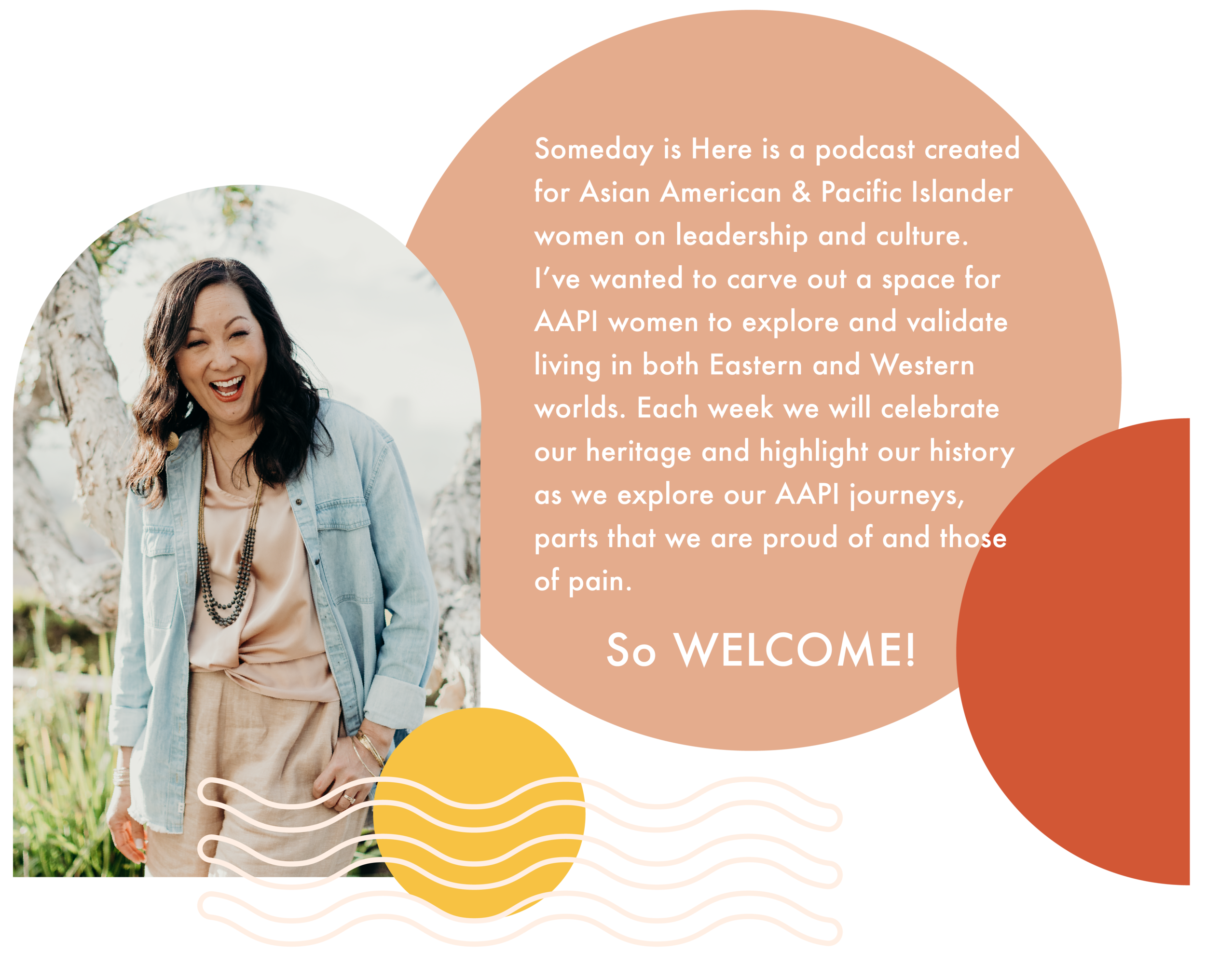Episode 31 - Christine Yi Suh
Episode 31 w/ Christine Yi Suh
This episode with @christineyisuh is packed with so much fire and heart. Christine is a leader to know and follow. Her writing is full of substance, empathy, and passion. You’ll be moved by an excerpt from her upcoming book about her great aunt escaping North Korea. We cover so many important topics: the model minority myth, the importance of knowing our history, shining and shrinking, and so much more. The future is bright because of leaders like Christine! Can’t wait for you to listen to our conversation!
LEARN MORE ABOUT CHRISTINE
Instagram: @christineyisuh
Christine Yi Suh is a writer, pastor, spiritual director, and creative. She is the former Pastor of Spiritual Formation at Fellowship Church in Monrovia, CA where she oversaw soul care initiatives, discipleship curriculum and facilitated racial reconciliation workshops. Prior to her role, she was the Assistant Director of Spiritual Formation and Care at Pepperdine University, where she provided oversight for the Spiritual Life Advisor program for six years. She received her M.A. in Theology from Gordon-Conwell Theological Seminary in 2010, her B.A. in Intercultural Communication from Pepperdine University, and is a graduate of the Renovare Institute for Christian Spiritual Formation. Her forthcoming book, Forty Days on Being a Four releases with Intervarsity Press in Fall 2021 and explores the intersection of her Asian American ethnic identity, womanhood, activism, and faith formation in light of being an Enneagram Four. She and her spouse David have been married for ten years and live outside Los Angeles with their two young children Sammy and Ellie.
FAVORITE COMFORT FOOD
Naengmyeon (Korean cold noodles)
LEADERSHIP LESSON
“I want to instill a sense of pride within my children. Their voice matters. Their story matters and that their story isn’t compartmentalized” outside of me, Dave, their grandparents, their great-grandparents; but that their story spans legacies and generations of history of our people being resilient and our people overcoming. Yes, we experienced oppression, but we have moved forward.”
“I want them to know the hardship that my family has experienced. Not just my family, but also the Korean community. Not just the Korean community, but the broader Asian community.”
DID YOU KNOW?
Sisterhood as Resistance
Did you know that created communities of Korean American military brides can be seen as a form of resistance? Between 1950 and 1989, 90,000 Korean women entered the United States as U.S. military brides, representing 13% of Korean immigrants between that time. (1) In an essay written by historian Ji-Yeon Yuh of Northwestern University, she argues that the communities of Korean military brides formed during this time experienced a “complex struggle for survival” in which she characterizes as “everyday resistance.” (2) Yuh defnes everyday resistance as a means of resistance “that is woven into the fabric of daily life, often covert, usually subtle, and rarely identified as resistance.” (3) For the communities of Korean military brides, this looked like navigating the tension between understanding a new family, culture, and society, the pressure to Americanize, dealing with pre-existing notions within the Korean immigrant community of military brides, and maintaining a sense of self affirmation. (4) It was in these created spaces of sisterhood where they were allowed to freely express themselves through language and support one another, while maintaining a sense of truth to oneself. What made these communities extensive and even global was their ability to maintain connections, thus allowing for their networks to overlap as they took care of each other wherever they went. They were able to find each other jobs, exchange imitation recipes, and connect each other to churches or friend groups because of personal ties and mutual friendships (5). There is much to learn and glean from these Korean American communities of women who leaned on each other not only as a form of support in spaces that were not built to serve immigrant women like themselves, but as a form of everyday resistance. Their existence and ability to thrive became their resistance. May we continue to form bonds of sisterhood!
Works Cited
Yuh, Ji-Yeon. “Imagined Community: Sisterhood and Resistance among Korean Military Brides in America, 1950-1996.” In Asian/Pacific Islander American Women: A Historical Anthology, edited by Shirley Hune and Gail M. Nomura, 221-236. New York: New York University Press, 2003.
Resources
Ji-Yeon Yuh, “Imagined Community: Sisterhood and Resistance among Korean Military Brides in America, 1950-1996,” in Asian/Pacific Islander American Women: A Historical Anthology, eds. Shirley Hune and Gail M. Nomura (New York: New York University Press, 2003), 222.
Ibid, 221.
Ibid, 221.
Ibid, 221.
Ibid, 226.

















